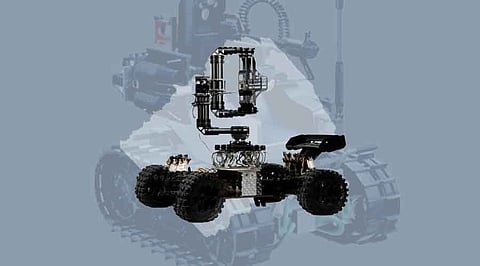

Military robotics represents a rapidly evolving frontier in defense technology. Advances in unmanned systems, including drones and autonomous vehicles, are reshaping the landscape of modern warfare. These technologies offer enhanced surveillance capabilities, strategic agility, and reduced human risk, making them pivotal assets in safeguarding national security.
In the ever-evolving landscape of modern warfare, the significance of military robotics cannot be overstated. Advances in unmanned systems have ushered in a new era of defense strategies and tactics. These technologies, ranging from autonomous drones to ground-based robotic units, are reshaping the way armed forces operate and safeguard nations. Military robotics offer unparalleled precision, efficiency, and safety in missions, and their roles extend from reconnaissance and surveillance to combat and logistics. In this era of rapid technological innovation, this article delves into the transformative impact of military robotics, exploring the latest developments, challenges, and the future of unmanned systems in defense.
The world of military technology has witnessed a profound transformation with the advent of unmanned systems, commonly known as military robotics. These advanced robotic systems have revolutionized defense operations, offering unparalleled capabilities in surveillance, reconnaissance, combat, and logistics. This essay delves into the remarkable progress and implications of military robotics, exploring how these machines are reshaping modern warfare.
Military robotics have significantly improved surveillance and reconnaissance capabilities. Unmanned aerial vehicles (UAVs) or drones, equipped with high-resolution cameras and sensors, can gather critical intelligence while reducing the risk to human operators. These systems provide real-time data and imagery for better situational awareness, aiding in strategic decision-making.
Armed drones have become formidable tools in modern warfare. They can deliver precision strikes on enemy targets with minimal collateral damage. Armed with advanced weaponry, these robots can engage hostile forces while keeping human operators at a safe distance. This capability has been instrumental in counter-terrorism operations and asymmetric warfare scenarios.
Military robots have streamlined logistics and supply chain management in the armed forces. Autonomous ground vehicles and drones can transport supplies, ammunition, and medical equipment across rugged terrains, reducing the burden on human personnel and enhancing operational efficiency. This capability is especially valuable in remote and hostile environments.
Robots equipped with specialized tools and sensors play a vital role in explosive ordnance disposal. These EOD robots can approach and defuse improvised explosive devices (IEDs) and other hazardous materials, protecting human lives and ensuring the safety of military operations.
Military robotics extends beyond combat applications. In disaster-stricken areas, these robots can be deployed for search and rescue missions. Drones equipped with thermal cameras can locate survivors in rubble, while ground robots can access hard-to-reach areas to provide aid and assess damage.
Autonomous ground vehicles and unmanned tanks are on the horizon of military robotics. These machines can navigate complex terrains, operate in hostile environments, and engage enemy forces autonomously. They offer the potential to change the dynamics of ground warfare, reducing risks to soldiers.
The proliferation of military robotics raises ethical and legal questions. Concerns include the potential for autonomous robots to make life-and-death decisions, accountability for unintended consequences, and adherence to international laws governing armed conflict. Striking the right balance between human control and machine autonomy remains a challenge.
The deployment of armed drones has prompted discussions on international relations and arms control. Nations must grapple with questions regarding the responsible use of military robotics, transparency in operations, and the potential for an arms race in unmanned systems. International agreements and norms are under development to address these issues.
As military systems become increasingly connected and reliant on digital technologies, concerns about cybersecurity vulnerabilities grow. Hackers and adversaries may target unmanned systems to disrupt military operations. Ensuring the cybersecurity of these systems is a critical priority.
Military robotics have ushered in a new era of warfare and defense capabilities. From enhanced surveillance and precision strikes to logistics support and disaster relief, these unmanned systems have transformed the landscape of military operations. However, along with their undeniable benefits come ethical, legal, and security challenges that must be addressed.
As the field of military robotics continues to advance, it is imperative for nations to adopt responsible practices and ensure that these technologies are used in accordance with international laws and ethical standards. Striking the right balance between human oversight and autonomy is crucial to harnessing the full potential of military robotics while minimizing risks and safeguarding the future of modern warfare.
Join our WhatsApp Channel to get the latest news, exclusives and videos on WhatsApp
_____________
Disclaimer: Analytics Insight does not provide financial advice or guidance on cryptocurrencies and stocks. Also note that the cryptocurrencies mentioned/listed on the website could potentially be scams, i.e. designed to induce you to invest financial resources that may be lost forever and not be recoverable once investments are made. This article is provided for informational purposes and does not constitute investment advice. You are responsible for conducting your own research (DYOR) before making any investments. Read more about the financial risks involved here.
